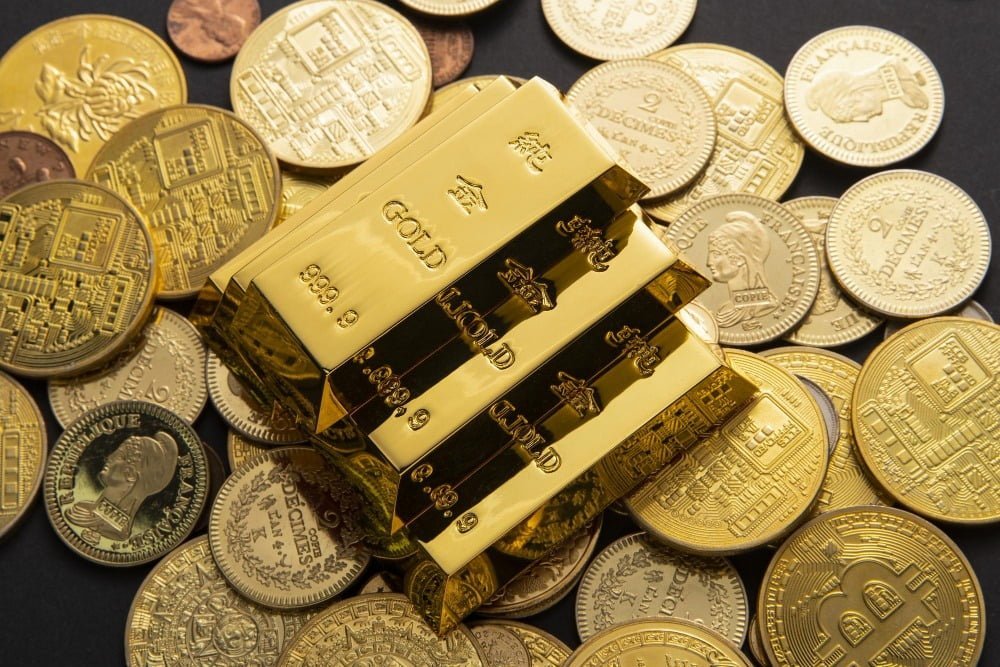Despite lower than expected inflation readings, gold vaulted higher on Wednesday, according to the Gold Traders Index (GTX). Precious metals prices have been tumbling in the past month, but have been bouncing back recently as commodities have recovered and inflation has slowed. In addition, Asia’s economy has been regaining momentum, as non-oil domestic exports jumped at a faster-than-expected 12.4% annual rate.
Precious metals
Investing in precious metals is an effective hedge against multiple risks. These include rising inflation, energy prices, and the possibility of a stock market crash. A third of precious-metal investors are now buying bullion to diversify their portfolio.
While the gold price has been relatively unchanged for the past month, it’s been able to pull ahead in the past two weeks. On Wednesday, the dollar depreciated further, helping push gold back over 200 dma. The metal also enjoyed double-digit gains during the Diwali celebrations.
Investing in gold has a long history. It has been around since the end of the 14th century. A periodic table published by William Odling in 1864 included a “precious metal” close to silver.
A recent survey conducted by BullionVault found that a third of precious-metal investors are now looking to diversify their portfolios by purchasing physical gold. The gold-silver combination is a great way to invest in this safe-haven asset.
Commodities sold off sharply in July
During a month of turmoil in the global economy, commodities sold off in a big way. A broader than expected inflation reading sparked fears that the US could fall into a recession. The Consumer Price Index, a measure of prices, rose 9.1 percent in June from a year ago, exceeding expectations. The core inflation index, which strips out food and fuel prices, rose 5.9 percent over the same period.
The report raised expectations that the Fed would raise interest rates another one percentage point later this month. In fact, the core index increase was faster than expected, and the Fed’s Chair, Jerome Powell, called the move “unusually large.”
The broader economic outlook continued to cause concern among investors. The Federal Reserve and other central banks have been raising interest rates to contain escalating inflation. A recurring lockdown in China, the ongoing threat of a potential recession in the US, and Russia’s incursion in Ukraine pushed the markets further into uncertainty.
Asia’s economies boosted non-oil domestic exports by a greater-than-expected 12.4% annual pace
Despite rising inflation and labor shortages, Asia’s economies continued to boost non-oil domestic exports by a more than expected 12.4% annual pace. While the rate was modest in comparison to the “Four Tigers,” the region has outpaced other parts of the world in terms of growth.
Several factors contribute to the success of Asia’s newly industrializing countries. One is the high rate of investment and the second is the region’s openness. With a high degree of openness, a country’s trade deficit is offset by its exports. This is important because it is the source of economic growth.
Another factor is the rise in energy and food prices. These soaring costs, combined with the usual global monetary stimulus, have prompted central banks all over the world to raise interest rates in order to curb the inflationary surge.
Interest rate hikes would raise the opportunity cost of holding non-yielding bullion
Despite recent interest rate hikes, the opportunity cost of holding non-yielding bullion like gold remains high. This is because higher interest rates increase the amount of money an investor needs to spend to buy a dollar-priced asset. This increase in cost increases the demand for the precious metal.
Moreover, the opportunity cost of holding gold can also be reduced when real interest rates fall. This reduces the cost of holding the precious metal and boosts the price of gold.
The Federal Reserve has not yet blinked on its plan to raise interest rates, which could be good news for gold. However, if the Fed does hike rates, the price of gold could fall.
Last week, the US Fed indicated that it may consider a pause in rate hikes at its next meeting, likely in December. But this move would be a reversal of the hawkish rhetoric the central bank has used to combat inflation.
Options for inflation-indexed bonds
Investing in a money market fund would erode your purchasing power. If you want to protect yourself against the rising cost of living, consider investing in an inflation-indexed bond. These bonds pay a fixed rate of interest for the life of the investment, and their principal value is adjusted to reflect changing inflation.
Inflation-linked bonds, also known as TIPS, are issued by various nations around the world. They are sold to reduce the borrowing costs of governments. The U.S. has been issuing TIPS since 1997. They offer investors a fixed long-term yield, and they are backed by the full faith and credit of the U.S. government.
The United States has experienced a period of high inflation. Despite the Fed’s plan to hike rates, US inflation remained above the target. The CPI was 8.3% in May, down from 8.6% in April and above the expected reading of 8.1%. The personal consumption expenditures price index was up 0.2% in October.
